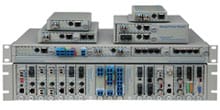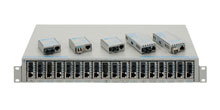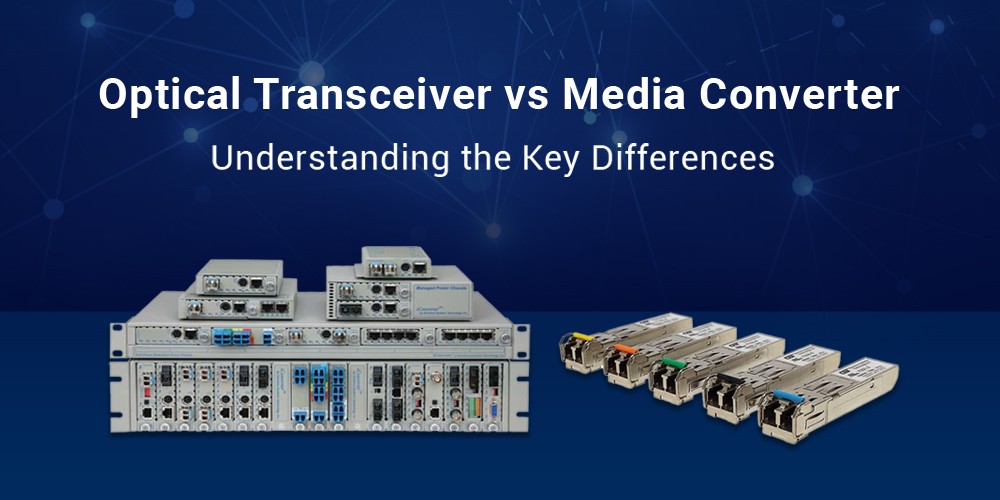- Products
- PoE Media Converters and Switches
- Ethernet & PoE Switches Product Selector
- Multi-Gigabit Ethernet and PoE Switches
- PoE PSE Commercial Switches
- PoE PSE Industrial Fiber Switches
- PoE Industrial Copper Extenders
- PoE Powered Media Converters
- PoE PSE Media Converters
- PoE Extenders & Injectors Product Selector
- Pluggable Transceivers Product Selector
- Single Pair PoE Products
- Product Lines

- iConverter Managed Multi-service Platform
- Copper to Fiber Media Converters
- Ethernet Media Converters
- 10 Gigabit Copper-to-Fiber
- 10/100/1000 Copper to 10 Gigabit Fiber
- 10/100/1000 Copper-to-Fiber with Integrated Management
- 10/100/1000 Industrial Copper-to-Fiber with Integrated Management
- 10/100/1000 Copper-to-Fiber with VLAN
- 10/100/1000 Dual Media Converter with VLAN
- Gigabit Copper-to-Fiber
- 10/100 Copper-to-Fiber with Integrated Management
- 10/100 Industrial Copper-to-Fiber with Integrated Management
- 10/100 Copper-to-Fiber with VLAN
- 10/100 Copper-to-Fiber
- Fast Ethernet Copper-to-Fiber
- Fast Ethernet Redundant Links
- 10Mbps Copper-to-Fiber
- 10Mbps Copper to Coax
- TDM Media Converters
- Serial Media Converters
- Ethernet Media Converters
- Fiber to Fiber Media Converters
- 10 Gigabit Fiber-to-Fiber Converter and Transponder
- 10 Gigabit Industrial Converter and Transponder
- SFP-to-SFP Fiber Converter and Transponder
- SFP-to-SFP Industrial Fiber Converter and Transponder
- Gigabit Fiber to-Fiber with 3 Rs
- 100/1000 Fiber-to-Fiber with 3 Rs
- Gigabit Fiber-to-Fiber
- Fast Ethernet Fiber-to-Fiber with 3 Rs
- Fast Ethernet Fiber-to-Fiber
- OC-3/STM-1 Fiber-to-Fiber
- OC-12/STM-4 Fiber-to-Fiber
- Carrier Ethernet Network Interface Devices
- CE 2.0 - 10G Demarcation NID
- CE 2.0 - 10/100/1000 Mult-port NID
- CE 2.0 - 10/100/1000 Mult-port NID with PoE
- CE 2.0 - 10/100/1000 8-Port NID
- CE 1.0 Service OAM - 10/100/1000 NID
- CE 1.0 Link OAM - 10/100/1000 Copper-to-Fiber NID
- CE 1.0 Link OAM - 10/100 Copper-to-Fiber NID
- CE 1.0 Link OAM - Gigabit Fiber-to-Fiber NID
- CE 1.0 Link OAM - Fast Ethernet Fiber-to-Fiber NID
- CWDM Multiplexers
- T1/E1 Multiplexers
- Ethernet Switch Modules
- Management System
- Chassis Options

- 1-Module Industrial Chassis

- RuggedNet Industrial Switches and Extenders
- Industrial PoE PSE Fiber Switches
- Multi-Gigabit Managed Industrial PoE+/BT Switches
- Multi-Gigabit Unmanaged Industrial PoE+/BT Switches
- 10G Managed 802.3bt PoE Switches
- 10G Unmanaged 802.3bt PoE Switches
- 10G Managed PoE+ Switches
- 10G Unmanaged PoE+ Switches
- 1G Managed PoE+ Switches
- 1G Unmanaged PoE+ Switches
- 1G Unmanaged 802.3bt PoE Switches
- 1G Managed 802.3bt PoE Switches
- Industrial SPE Switches
- Industrial Ethernet Switches
- Industrial PoE Copper Extenders
- Industrial Power Supplies

- OmniConverter Media Converter, Switches and Extenders
- PoE PSE Media Converters
- 10G Multi-Gigabit / Multi-Rate PoE Media Converter
- 10G Multi-Gigabit / Multi-Rate Media Converter
- 10/100 Multi-port PoE+ Media Converter
- 10/100 PoE+ Media Converter
- 10/100/1000 Multi-Port PoE+ Media Converter
- Industrial 10/100/1000 Multi-Port PoE+ Media Converter
- 10/100/1000 PoE+ Media Converter
- 10/100/1000 PoE++ 60W-100W Media Converter
- Industrial 10/100 Multi-port PoE+ Media Converter
- 1U Rack-Mount Shelf
- PoE PSE Compact Switches
- Multi-Gigabit Managed PoE+/BT Switches
- Multi-Gigabit Unmanaged PoE+/BT Switches
- 10G Managed 802.3bt PoE Switches
- 10G Unmanaged 802.3bt PoE Switches
- 10G Managed PoE+ Switches
- 10G Unmanaged PoE+ Switches
- 1G Managed PoE+ Switches
- 1G Unmanaged PoE+ Switches
- 1G Managed 802.3bt PoE Switches
- 1G Unmanaged 802.3bt PoE Switches
- Ethernet Switches
- Single Pair Ethernet (SPE)
- PoE Copper Extenders
- PoE Injectors

- miConverter Unmanaged Miniature Media Converters
- 10/100/1000 Copper-to-Fiber
- Industrial 10/100/1000 Copper-to-Fiber
- 10/100/1000 Ultra-Compact Copper-to-Fiber
- Gigabit Copper-to-Fiber
- 10/100/1000 Copper-to-Fiber PoE Powered
- 10/100 Copper-to-Fiber
- 10/100 Ultra-Compact Copper-to-Fiber
- 10/100 Copper-to-Fiber PoE Powered
- 18-Module Chassis
- Industrial 10/100 Copper-to-Fiber PoE Powered

- FlexSwitch Compact Switches
- Solutions
- Company
- Support
- How to Buy
Optical Transceiver vs Media Converter: Understanding the Key Differences

Media converters and optical transceivers are both essential for network connectivity. While both serve similar functions, they operate in distinct ways and suit different applications. This blog explores the nuances of optical transceivers and media converters, highlighting their features, applications, and key differentiators.
What Is an Optical Transceiver?
Devices used in fiber optic communication systems for data transmission across optical fibers are known as optical transceivers, or fiber optic transceivers. They transform electrical signals into optical signals for transmission and vice versa, enabling smooth communication over long distances.
Types of Optical Transceivers
Optical transceivers come in a variety of types, including:
GBIC (Gigabit Interface Converter):
GBIC (Gigabit Interface Converter) transceiver is an optical transceiver module for data transmission over fiber optic cables. It is a hot-swappable input/output device that plugs into Gigabit Ethernet ports on switches, routers, and other networking equipment.
SFP Transceiver (Small Form-factor Pluggable):
SFP transceivers are smaller and more compact than GBICs. They use a standardized modular design that plugs into SFP slots on networking equipment, making them suitable for high-speed data transmission.
SFP+ (Enhanced Small Form-factor Pluggable):
SFP+ transceiver refers to an enhanced version of the SFP (Small Form-factor Pluggable) transceiver specifically designed for higher data rates, commonly used in 10 Gigabit Ethernet applications.
XFP (10 Gigabit Small Form Factor Pluggable):
XFP, which stands for 10 Gigabit Small Form-factor Pluggable, is another hot-swappable optical transceiver module designed for 10 Gigabit Ethernet, SONET, and other high-speed applications.
| Feature | GBIC | SFP | SFP+ | XFP |
|---|---|---|---|---|
|
Data Rate |
1 Gbps |
1 Gbps |
10 Gbps |
10 Gbps |
|
Applications |
1 Gigabit Ethernet (fiber) |
1 Gigabit Ethernet (fiber & copper) |
10 Gigabit Ethernet (fiber) |
10 Gigabit Ethernet (fiber), SONET, OTN |
|
Size |
Larger than SFP/SFP+ |
Most compact |
Most compact |
Larger than SFP and SFP+ |
|
Current Usage |
Less common, legacy equipment |
Common |
Common for 10 Gigabit Ethernet |
Less common, potentially for specific applications |
Applications of Optical Transceivers
Optical transceivers are vital in high-speed data transmission, particularly across long distances. Their core function of converting electrical signals to light and vice versa makes them essential components in various applications.
What are Media Converters?
Media converters are networking devices that enable seamless connectivity between different media types, such as copper and fiber optic cables. They convert signals from one media type to another, extending the reach of network connections and overcoming compatibility issues.
Types of Media Converters
Media converters come in different forms to cater to specific networking needs:
Fiber to Copper Media Converters:
Fiber-to-copper media converters, also known as fiber optic media converters, are network devices that bridge the gap between fiber optic cabling and traditional copper cabling in Ethernet networks. They perform media conversion, allowing you to connect devices with different networking interfaces.
Standalone Converters
Standalone media converters, also known as standalone fiber-to-copper converters, are compact, self-contained units that provide a point-to-point media conversion solution between fiber optic and copper cabling in Ethernet networks. They are popular for applications requiring media conversion at individual network endpoints or specific connection points.
Chassis-based media converters
Chassis-based media converters, or modular media converter systems, offer a high-density solution for converting signals between fiber optic and copper cabling in Ethernet networks. They are ideal for situations where numerous media conversions are required in a centralized location.
| Feature | Standalone Converter | Chassis-based Converter |
|---|---|---|
|
Form Factor |
Compact, self-contained unit |
Modular design with multiple slots |
|
Deployment |
Point-to-point conversions |
High-density deployments |
|
Scalability |
Limited |
Highly scalable |
|
Power Source |
Separate power supply or PoE |
Dedicated power supply for chassis |
|
Management |
Typically unmanaged, some managed options |
Often managed, centralized control |
|
Cost |
Less expensive for low port counts |
More expensive initially, cost-effective per port for high density |
Applications of Media Converters
Media converters are vital in bridging the gap between different types of network cabling, particularly between fiber optic and copper cabling. Their applications encompass various scenarios, offering benefits like extending network reach, improving signal quality, and integrating diverse network components.
Optical Transceiver vs. Media Converter: A Comparison
While optical transceivers and media converters serve overlapping purposes in network infrastructure, they differ significantly in their functionalities and applications:
Functionality:
When using fiber optic cables for transmission, optical transceivers essentially transform electrical signals into optical signals and vice versa. On the other hand, media converters facilitate the conversion between different types of media, such as fiber optic and copper cables.
Application:
Optical transceivers are commonly used in long-distance communication and high-speed data transmission scenarios where fiber optic connectivity is essential. Media converters are deployed to integrate diverse network media types and extend network reach.
Flexibility:
Media converters offer greater flexibility by allowing the integration of disparate network technologies, whereas optical transceivers are more specialized for fiber optic communication.
Cost:
Media converters are more cost-effective for short-distance network connections, while optical transceivers are preferred for long-distance transmissions despite being relatively more expensive.
| Feature | Optical Transceiver | Media Converter |
|---|---|---|
|
Function |
Primarily photoelectric conversion (electrical to optical and vice versa) |
Media conversion (various types, including electrical to optical) |
|
Construction |
Compact, hot-pluggable module (SFP, SFP+, XFP, etc.) |
Standalone box with separate ports for each media type |
|
Applications |
Primarily used within network devices (switches, routers) for fiber optic connections |
Used at network endpoints or to extend existing copper networks using fiber optic cabling |
|
Scalability |
Limited to the specific port type of the transceiver module (e.g., SFP+ for 10 Gigabit Ethernet) |
More flexible as different media converter models can support various combinations of media types and speeds |
|
Power Source |
Usually powered by the network device it's plugged into |
Requires separate power supply |
|
Cost |
Generally more expensive than media converters |
Can be more cost-effective depending on the specific needs and functionalities |
|
Management |
Often managed through the network device's interface |
May require separate configuration or management tools |
FAQs
What are optical transceivers used for?
Optical transceivers are crucial in converting electrical signals into optical signals for long-distance communication. Optical transceivers are essential components in various industries, including data centers, telecommunications, and enterprise networks, where high-speed and reliable data transmission is required.
What is the difference between an optical network unit and a media converter?
The main difference between an optical network unit (ONU) and a media converter lies in their functionalities and applications within a network. An ONU serves as the endpoint in passive optical networks, connecting the customer premises to the central office's optical line terminal. In contrast, a media converter facilitates the conversion between different types of media, like fiber optic and copper cables, extending network reach and overcoming compatibility issues.
What is the difference between an optical transponder and a transceiver?
The distinction between an optical transponder and a transceiver lies in their functionalities and capabilities within a network infrastructure. An optical transponder is a more specialized device that receives an incoming optical signal, processes it, and retransmits it at a different wavelength or power level. In contrast, a transceiver converts electrical signals into optical signals for transmission and vice versa, integrating sending and receiving capabilities into a single device.
What is the difference between a media converter and a PoE extender?
When comparing a media converter to a PoE (Power over Ethernet) extender, the key difference lies in their primary functions and applications. A media converter converts different media types, such as fiber optic and copper cables, extending network connectivity. In contrast, a PoE extender is specifically designed to extend the reach of PoE-powered devices, such as IP cameras or wireless access points, by transmitting power and data over Ethernet cables over longer distances.
Conclusion
Optical transceivers and media converters are indispensable components of modern networking infrastructure. While optical transceivers excel in long-distance fiber optic communication, media converters provide flexibility in integrating different network media types. Understanding the distinctions between these two devices is essential for designing robust and efficient network architectures tailored to specific requirements.
Omnitron Systems products are designed and manufactured in the USA and adhere to TAA, BAA, and NDAA compliance standards. What sets us apart is the quality of our products and the assurance of a lifetime warranty and complimentary 24/7 technical support. If you are looking for a way to boost network performance or extend the reach of your network, Omnitron media converters and transceivers are a good solution for you.Call us now to get pre-sale support.









